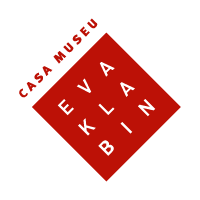dining
room

Endowing this room with a certain austerity, the Medieval French furniture dates back to the late Gothic Period in the XV century, acquired from the collection of an Austrian antique collector living in Argentina, Paula de Koenigsberg, and displayed in 1947 at the Museu Hispano-Americano in Buenos Aires. Particularly noteworthy is the finish of the doors, with the five niches in the boiserie turned into a showcase for the silverware, mainly English and ranging from the Georgian to the Victorian Periods, in addition to the large Gothic sacristy chests. A porcelain tureen and dishes are displayed on its top, featuring the “tobacco-leaf” pattern of the Companhia das Índias, as well as two imposing English silver candelabra dating back to the days of George IV, with the hallmark of Robert Garrard, an XIX century London silversmith.
Lit by a bronze Dutch light fitting with many candles, the colonial table from Minas Gerais State has many drawers, and is decked with half a dozen candlesticks shaped like Corinthian columns, as well as two large soup tureens, all in XVIII century English silver. The table is surrounded by ten high-backed chairs upholstered with fabric in a heraldic pattern. This room takes on a very different appearance when the table is laid for a banquet, covered by a pink tablecloth embroidered with white flowers that highlights the fine porcelain Limoges dinner service, the gilded English silverware and the Baccarat crystal, recalling the dinners hosted by Eva Klabin.
Placed on a small double-door commode, the wooden sculpture of a Grande Dame also dates back to the later Gothic Period, portraying a chatelaine wearing a headdress typical of Burgundy.
Dutch and Flemish masters prevail on the walls, dating back to the XVII century, which was the Golden Age of Dutch painting, when the arts flourished and easel painting developed to decorate wealthy bourgeois homes. The largest painting on the back wall is a portrait of a Magistrate surrounded by Books dated 1654 and signed by Govaert Flinck (1615-1660). Others include a still-life and several landscapes by painters such as Pieter Steenwyck, Willem Dubois, Glauber, Herman Nauwincx, Hercule Seghers and Philips Wouwerman.
The large Kirman-type flowered carpet is particularly eye-catching, colorful and rich in details, signed and dated in a small panel, and probably made early in the XX century.

